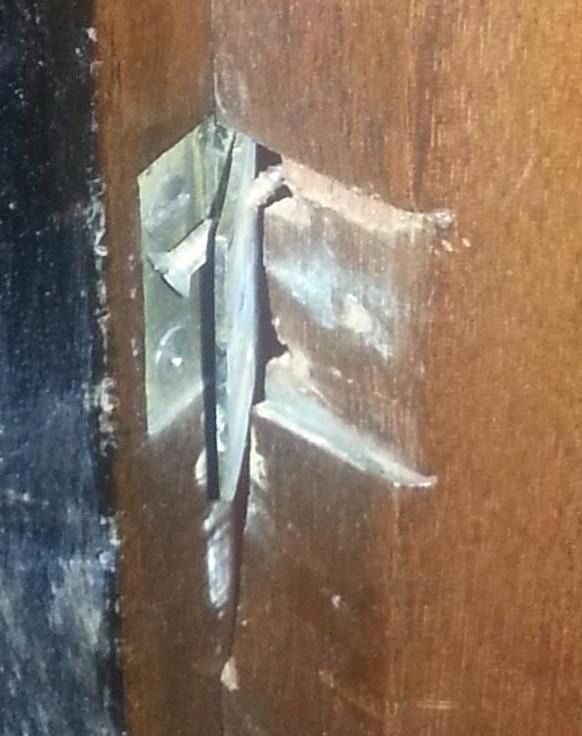It seems unlikely to me that wood filler will hold well because it's a surface repair and therefore wouldn't stand up under the strain of being attached to a hinge.
Well there's wood filler and there's wood filler. There are few commercial varieties that would be suitable for a repair of this nature, but that's simply because they're primarily intended for filling of minor surface defects that don't require anything in the way of structural strength.
Although there are better solutions than filling as a general principle, if you did want to try filling a far stronger compound than most commercial wood fillers can be made at home very easily, by mixing wood flour (sanding dust) with standard two-part epoxy glue. At best this bonds extremely well and is incredibly tough (much harder than the wood it replaces in actual fact) but it's still not the ideal fix in a location like this.
Replacing missing wood with wood is far preferable as a rule where strength is required.
Although it seems like taking a step in the wrong direction the first step is to remove more wood, but you have to create neat clean edges that allow for an exactly matching repair patch to be successfully glued to. In this case sawing out a rectangular piece just long enough to remove all splintered wood is probably the way to go.
Instead of marking out two rectangles, on the door and on the replacement wood, and then cutting both it is better to cut the notch from the door first and then mark your replacement wood directly from it; this is far more likely to result in a tight-fitting repair.
Although a repair of this nature is quite simple to do there are two main difficulties usually encountered:
- stock selection
- finish repair
Finding wood that matches the existing furniture can be challenging at the best of times and is impossible at others, so sometimes you have to resign yourself to a close-enough match that is lighter in colour and then use wood dye or stain to achieve a closer colour match before final finishing.
Finish repair is actually the largest hurdle in some ways. Many film finishes, such as this is likely to be coated in, are considered unrepairable so that stripping the whole panel would normally be the minimum that is advised, or the entire piece of furniture in some cases.
I would suggest that you try the former first and strip the door (which would already be removed from the cabinet making stripping easier), then try to match the existing finish across the door and its patch.
How best to match the existing finish would be a good follow-on Question. To best answer it more (and ideally better-quality) photos of the piece may be required.

